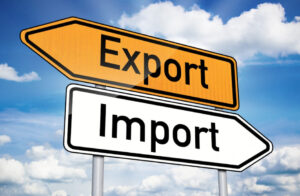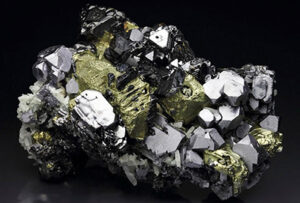
In January-May 2025, imports of tin and tin products to Ukraine increased by 70.5% to $1.739 million. In May, products worth $568 thousand were imported.
At the same time, tin exports decreased by 41.1% to $86 thousand compared to $146 thousand last year. In May, exports amounted to $30 thousand.
For the whole of 2024, tin imports increased by 16.9% to $3.188 million, while exports increased by 2.5 times to $389 thousand. In 2023, imports amounted to $2.728 million, while exports amounted to $159 thousand.

Imports of trucks to Ukraine in January-May 2025 amounted to $389.55 million in monetary terms, which is only 1% higher than the volume for the same period in 2024 ($386.02 million), according to statistics from the State Customs Service.
According to the published data, in particular, in May, imports of these vehicles increased by 18.7% compared to May 2024 – up to $102.8 million.
Most of the trucks were imported from Poland – $81.5 million (20.9% of imports), the United States – $74.4 million (19.1%), and France – $59.8 million (15.4%).
A year ago, the top three truck-supplying countries were Poland (21.4% of total truck imports, or $82.5 million), France (11.5%, or $44.5 million) and the United States (10.8%, or $41.6 million).
Imports from all other countries decreased by 20% to $173.8 million in January-May this year.
At the same time, according to statistics, Ukraine exported only $3 million worth of trucks over five months, mostly to Romania (52.6% of truck exports), Turkey, and Moldova, compared to even smaller deliveries abroad ($1 million) a year ago.
As reported, in 2024, imports of trucks to Ukraine in monetary terms increased by 30% compared to 2023 – up to $947.84 million, most of them were imported from Poland (almost 20%).

In January-May 2025, Ukraine imported zinc and zinc products worth $21.319 million, down 8.1% compared to the same period in 2024. In May, imports amounted to $6.237 million.
Exports of zinc products increased to $523 thousand against $84 thousand in the first five months of 2024. In May 2025, $113 thousand were exported.
In 2024, zinc imports reached $58.610 million (+27.5% compared to 2023), while exports amounted to $563 thousand. In 2023, imports were $45.966 million and exports were $130 thousand.

Imports of tractors to Ukraine in January-May 2025 amounted to $355.9 million, which is 3.8% less than in the same period in 2024, according to statistics from the State Customs Service.
According to the published statistics, tractors were mainly imported from the United States (19.7% of total imports of this equipment, or $70.1 million), Germany (17.3% or $61.4 million) and China (17.2% or $61.3 million), while a year earlier it was Germany ($59.7 million), the Netherlands ($53.6 million) and China ($44.2 million).
In May of this year, imports of tractors decreased by 10% to $60.2 million by May 2024, which is also 29% less than the volume of imports in April of this year.
According to statistics, only $2.5 million worth of tractors were exported in the first five months of this year, mostly to Romania, Zambia and Germany.
As reported, imports of tractors to Ukraine in 2024 amounted to almost $784 million, which is 5.6% less than a year earlier, while exports amounted to $5.44 million against $5.74 million.

According to the State Customs Service, in the first five months of 2025, imports of electric batteries and separators to Ukraine increased 2.3 times to $382.7 million. The main suppliers are China (76%), Taiwan (5.8%) and Vietnam (4.3%).
In May, imports of batteries amounted to $94.4 million, which is 92% more than in May 2024 and 34% more than in April. In particular, $14.8 million of products were imported from Vietnam, while for the entire 5 months – $16.5 million.
Exports of Ukrainian batteries amounted to $20.7 million, with the main destinations being Poland (29.4%), France (14.5%) and Germany (11.8%).
As a reminder, since the end of July 2024, Ukraine has exempted imports of electric generators and batteries from customs duties and VAT. In 2024, imports of generators reached $732.5 million (+3.7% compared to 2023), and imports of batteries reached $950.6 million (twice as much as in 2023).

In January-May 2025, Ukraine imported lead and lead products worth $3.413 million, which is 8.1 times more than in the same period in 2024. In May, imports amounted to $644 thousand.
At the same time, exports of lead products decreased by 16.1% to $3.638 million (in May – $679 thousand).
In 2024, Ukraine increased lead imports by 2.4 times to $2.391 million, while exports decreased by 22.9% to $11.401 million. For comparison: in 2023, imports amounted to $989 thousand, and exports – $14.778 million.